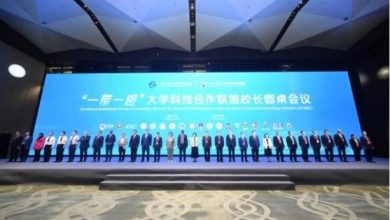The perennial quest for an optimal rate of inflation

[ad_1]
Recently high inflation has become a problem. In 2022, a regular opinion poll in the US recorded it as the most important economic issue facing the country, for the first time since the early 1980s. Back then Paul Volcker, Chairman of the US Federal Reserve from 1980-1987 introduced a period of very high interest rates to curb the problem, attracting strong political criticism and public protests. Inflation had peaked at 14.8% in 1980. Under his policy, Federal interest rates were increased to an exceptional high of 21%, but inflation did fall, reaching 3% by 1983, after which interest rates were cut.
Volcker saw inflation as not merely undesirable but dangerous. If pay rises are lower than inflation, living standards are continually eroded, and if they rise above, companies may have to pass on the costs to customers, forcing inflation further higher in an upward spiral.
His defenders can argue that his policy, which became known as the ‘Volcker shock’, was extreme but effective. Two sharp but short recessions were followed by an extended period of economic growth with low inflation. But the impact of the economic downturns was severe and unemployment rose.
In recent decades, it has become orthodoxy for central banks to set a formal target an inflation rate, typically 2%, and to use interest rates as the main policy instrument. The first central bank to do this in a formal way was New Zealand in 1990.
If Paul Volcker was an inflation hawk, his successor Alan Greenspan was more doveish in his long tenure from 1987 to 2006. Low interest rates in the late 1990s, and again in the early 2000s, were credited with contributing respectively to the dotcom crash of 2000 and the banking crisis of 2008, although there were other factors, such as the globalisation of finance. The current Federal chair Jay Powell seeks to implement interest rate rises without triggering a recession.
The conventional description of the primary cause of inflation – too much money chasing too few goods – is a timeless observation. Low interest rates can trigger inflation, and it can also be caused by constraints in supply. The conflict in Ukraine in 2022, and supply chains disruptions caused by the Covid-19 pandemic and lockdowns caused prices of commodities and other goods to rise. This coincided with low interest rates. Another contributory factor to inflation has been labour shortages in sectors such as hospitality since the lockdowns ended.
The reason that the targeted inflation rate is typically 2% and not zero is that deflation also presents problems. In Japan, the bursting of the asset price bubble of the late 1980s was followed by a banking crisis and an increase in company indebtedness. Businesses chose to pay down debt, which meant that borrowing and investment fell, depressing asset prices, retail prices and wages in a deflationary cycle lasting for much of the 30-year period 1990-2020. Because wages were falling, consumers were not experiencing the benefits of low inflation. The economy of China has begun to feature some of the same features of Japan in recent decades, just at the point that Japan has begun to experience a return of inflation.
In Qatar, inflation has not been a significant problem. It peaked in 2008 at 15%, before plunging into negative territory in 2009 following the financial crisis. There was a more modest increase in 2022, the year of the World Cup, but it has since fallen. The Consumer Prices Index (CPI) was in the range 4-5% for much of 2022, but has been below 4% during 2023.
In measuring inflation, each nation assembles a basket of goods and services for which changes in price are measured. Periodically, the mix needs updating, for example to remove consumer items that have become obsolete. It is unhelpful to make too many changes too frequently, as then the comparisons would not be like-for-like.
In Qatar, there was a revision to the CPI formula in the period 2013-2018, but with only small adjustments to the principal categories. The relative weighting of food and beverages was increased from 12.58% to 13.45%, for housing it was slightly lower, from 21.89% to 21.17%, while recreation and culture changed from 12.68% to 11.1%.
Recent experience confirms that a target inflation rate of 2% is rational, as it is consistent with economic growth and rising living standards. But in a globalised economy there are so many factors involved that achieving such an optimal rate will always be a challenge.
The author is a Qatari banker, with many years of experience in the banking sector in senior positions.
[ad_2]
Source link







